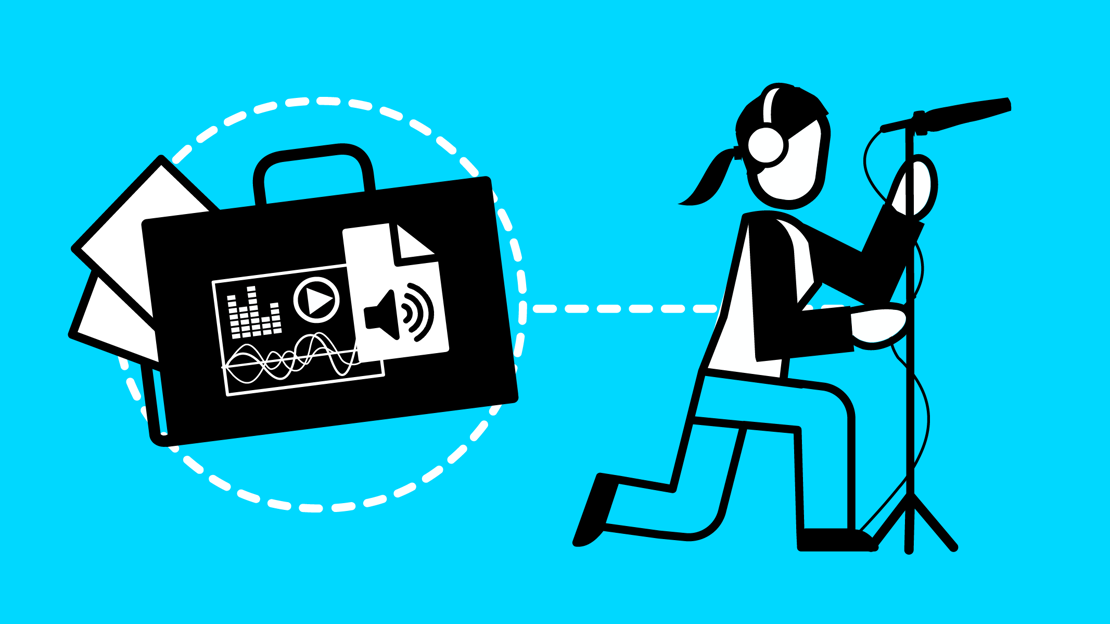If you want to work in sound in the film and TV industries, you will need to show examples of your work. This can take the form of a showreel – a short video that shows a selection of clips of your very best work. It can also be a website, where you can show a more comprehensive portfolio by including audio tracks and text.
What should a sound portfolio have in it?
There should be an equal emphasis on the recording of location sound (production sound) and the editing and mixing of the results (post-production sound). Sound design begins with and incorporates the recordings made on location – it’s not just the work carried out in the studio during post-production.
Show you have knowledge of different microphones and different recorders and how you would use them to achieve the best results. Demonstrate you know what dialogue editors require and what sound effects editors require.
It helps to find a way of demonstrating an understanding of the various roles in the sound production chain, such as sound assistant, Foley editor, ADR editor, dubbing assistant. Look at the supervising sound editor for details.
Include projects that demonstrate a wide range of genre, such as drama, documentary, current affairs, sport.
Make sure you use original sounds that you’ve recorded – experienced interviewers will have heard all the library sounds many times before.
Tips for building a sound portfolio
- Include a video showreel of projects you’ve worked on that shows off your sound.
- Make your showreel approximately two to three minutes long.
- Have audio clips of Foley you’ve created. You can embed them from a platform such as SoundCloud.
- Always render your audio at the highest possible quality.
- Make sure all the content loads quickly and plays on a variety of browsers and devices.
- If you want, you can include videos of you recording sound.
- Put in a short piece of writing about the brief for each piece.
- Be clear about the contribution that you have made.
- Include a short biography detailing your experience and background.
- Have a contact page and include your social media links. It needs to be clear how to get in contact with you.
- Get feedback. Ask family and friends to take a look at your portfolio so you can see how it comes across to the viewer or listener and whether it is easy to interpret.
- Make sure you use your best work in your portfolio and keep it up to date with your most recent projects.
Where to host your portfolio and showreel
You can build your portfolio website using the following free platforms:
Portfoliobox
A portfolio website for creatives. There’s a free version available, which offers the ability to host 30 images and 10 pages and has a 0% commission e-commerce.
Wordpress
There’s a free version with up to 3GB of storage space. Other paid plans are available.
You can host your showreel on the following sites:
Vimeo
A video hosting site and video player. Offers a free package called “Vimeo Basic”.
YouTube
Free video sharing platform. (Less of a professional sheen or reputation than Vimeo, but widely used).
Free audio software
You can use the following software to start creating your own work to build your portfolio:
Recording, mixing and editing software
DaVinci Resolve
Operating system: Windows and macOS
Covers ingest, picture editing and the Fairlight digital audio workstation
Ocenaudio
Operating system: Windows and macOS
Audio editor useful for analysing audio files
Frinika
Operating system: Windows and macOS
Free digital audio workstation with MIDI sequencer and synthesizers
Audacity
Operating system: Windows and macOS
Audio recorder and editor, easy to use and useful for getting to grips with the basics of editing
How should I share my portfolio?
When you write a CV or covering letter, put in the link to your website or showreel.
Include a link on your business cards or in the bio of any social media accounts that you use strictly for professional purposes. Also, include a link to your professional social media accounts from your portfolio page.
